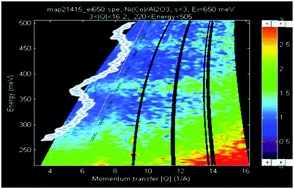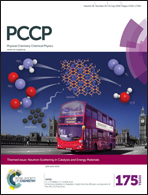An in-depth understanding of the bimetallic effects and coked carbon species on an active bimetallic Ni(Co)/Al2O3 dry reforming catalyst†
Abstract
Ni/Al2O3, Co/Al2O3 and bimetallic Ni(Co)/Al2O3 catalysts were prepared using an impregnation method and employed in CO2 dry reforming of methane under coking-favored conditions. The spent catalysts were carefully characterized using typical characterization technologies and inelastic neutron scattering spectroscopy. The bimetallic catalyst exhibited a superior activity and anti-coking performance compared to Ni/Al2O3, while the most resistant to coking behavior was Co/Al2O3. The enhanced activity of the Ni(Co)/Al2O3 bimetallic catalyst is attributed to the reduced particle size of metallic species and resistance to forming stable filamentous carbon. The overall carbon deposition on the spent bimetallic catalyst is comparable to that of the spent Ni/Al2O3 catalyst, whereas the carbon deposited on the bimetallic catalyst is mainly less-stable carbonaceous species as confirmed by SEM, TPO, Raman and INS characterization. This study provides an in depth understanding of alloy effects in catalysts, the chemical nature of coked carbon on spent Ni-based catalysts and, hopefully, inspires the creative design of a new bimetallic catalyst for dry reforming reactions.

- This article is part of the themed collection: Neutron Scattering in Catalysis and Energy Materials


 Please wait while we load your content...
Please wait while we load your content...